+Search query
-Structure paper
| Title | Resolving native GABA receptor structures from the human brain. |
|---|---|
| Journal, issue, pages | Nature, Vol. 638, Issue 8050, Page 562-568, Year 2025 |
| Publish date | Jan 22, 2025 |
 Authors Authors | Jia Zhou / Colleen M Noviello / Jinfeng Teng / Haley Moore / Bradley Lega / Ryan E Hibbs /  |
| PubMed Abstract | Type A GABA (γ-aminobutyric acid) receptors (GABA receptors) mediate most fast inhibitory signalling in the brain and are targets for drugs that treat epilepsy, anxiety, depression and insomnia and ...Type A GABA (γ-aminobutyric acid) receptors (GABA receptors) mediate most fast inhibitory signalling in the brain and are targets for drugs that treat epilepsy, anxiety, depression and insomnia and for anaesthetics. These receptors comprise a complex array of 19 related subunits, which form pentameric ligand-gated ion channels. The composition and structure of native GABA receptors in the human brain have been inferred from subunit localization in tissue, functional measurements and structural analysis from recombinant expression and in mice. However, the arrangements of subunits that co-assemble physiologically in native human GABA receptors remain unknown. Here we isolated α1 subunit-containing GABA receptors from human patients with epilepsy. Using cryo-electron microscopy, we defined a set of 12 native subunit assemblies and their 3D structures. We address inconsistencies between previous native and recombinant approaches, and reveal details of previously undefined subunit interfaces. Drug-like densities in a subset of these interfaces led us to uncover unexpected activity on the GABA receptor of antiepileptic drugs and resulted in localization of one of these drugs to the benzodiazepine-binding site. Proteomics and further structural analysis suggest interactions with the auxiliary subunits neuroligin 2 and GARLH4, which localize and modulate GABA receptors at inhibitory synapses. This work provides a structural foundation for understanding GABA receptor signalling and targeted pharmacology in the human brain. |
 External links External links |  Nature / Nature /  PubMed:39843743 / PubMed:39843743 /  PubMed Central PubMed Central |
| Methods | EM (single particle) |
| Resolution | 2.9 - 3.74 Å |
| Structure data | EMDB-45878, PDB-9crs: EMDB-45884, PDB-9crv: EMDB-45890, PDB-9csb: EMDB-45894, PDB-9ct0: EMDB-45908, PDB-9ctj: EMDB-45914, PDB-9ctp: EMDB-45920, PDB-9ctv: EMDB-45980, PDB-9cx7: EMDB-45983, PDB-9cxa: EMDB-45984, PDB-9cxb: EMDB-45985, PDB-9cxc: EMDB-45986, PDB-9cxd: EMDB-47132, PDB-9drx: |
| Chemicals |  ChemComp-ABU: 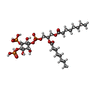 ChemComp-PIO: 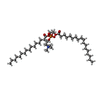 ChemComp-POV: 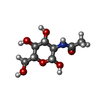 ChemComp-NAG: 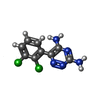 ChemComp-IYJ: |
| Source |
|
 Keywords Keywords | MEMBRANE PROTEIN / Ion channels / heteropentamer / receptors / ihibitory. / MEMBRANE PROTEIN-IMMUNE SYSTEM complex / Receptor / Inhibitory. / Native / GABAA / ligand gated ion channel / neurotransmitter receptor |
 Movie
Movie Controller
Controller Structure viewers
Structure viewers About Yorodumi Papers
About Yorodumi Papers












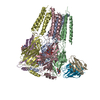















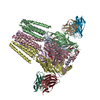
 homo sapiens (human)
homo sapiens (human)
